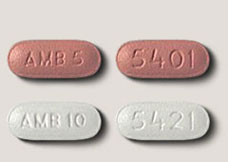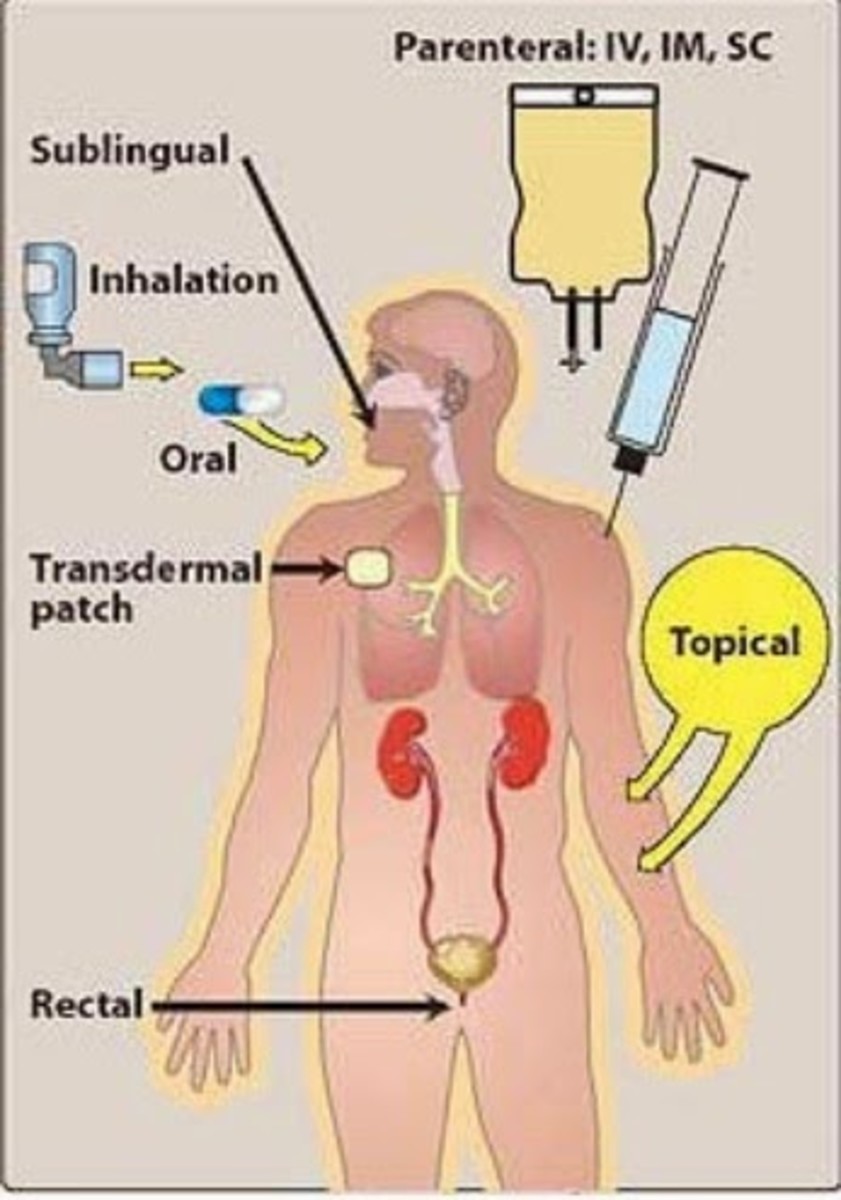Prescription Drugs on TV: Making More Dollars than Sense.

Most of the people who watch TV today are too young to remember the early and more innocent days of television advertising. Back when toothpaste was too intimate a product to advertise, when people kept what went on in their bathroom their own business. Looking at the current state of advertising on television and this seems hard to believe. Everyday we are bombarded with ads featuring attractive models admitting semi-reluctantly to the cameras that they have herpes, or erectile dysfunction. Soccer Mom types confessing that they are always on the look out for a bathroom because their bladders are a little iffy.
Nothing is a taboo topic for the media marketing industry anymore it seems. Even with this sense of openness and honesty in advertising, they still focus more on selling a product when they should be informing the public, and advising them to make smart decisions about their lives.
an ad you would see in the 1950s...
...compared to an ad from today.
As consumers, we need to be aware of the ulterior motives present in the advertising world. We also need to be aware of the tricks of the trade. How do they manipulate they way we think about a product? However, responsibility also lies with the big shots in television and advertising. They are the windows to information for the entire world. They know all about how to use their power and they should be using it for good.
Nowhere is this more important than in the ever growing amount of prescription drug ads on television. It is now almost impossible to watch even one show on television without seeing an ad for some kind of prescription drug. In 1997 the Food and Drug Administration lifted restrictions and allowed prescription drug companies to advertise on television. Since then the budgets for advertising these drugs increased drastically, going from $1.07 billion in 1996 to about $4 billion in 2004 (Becker, 2005, p. 442).
The ads are working too; the drugs with the largest advertising budgets are inevitably the best sellers. The increased sales of the 50 drugs with the largest ad budgets accounted for almost half of the $20.8 billion surge in retail spending on prescription drugs between 1999 and 2000 (Korcok, M. 2002, p. 289).
These are fantastic numbers if you are in the business, but are these ads safe? Are they honest and informative? Or are they out to make a buck at any cost? These are questions we need to ask ourselves when we are processing the information blasted at us daily.
But do we not, as consumers, need to be informed of these drugs? This is a good question to ask. Surely the more we know about the treatments that are available to us, the better our chances of making the best decision when it comes to our health care choices. You may see these commercials as a platform to educate the masses, to let them know their options. Surely there are cases where a patient saw an ad for a new drug and finally decided to ask his or her doctor for help. Television is the best way to step into the homes of America and teach and inform; but is this really the goal of direct to consumer prescription drug advertising?

Have you ever watched a commercial and by the time it was over you still didn’t know what it was trying to sell? Sure it was enthralling, perhaps with dazzling special effects, or the distracting glamour of a celebrity spokesperson. After all the glitter there is no point if you don’t want to buy the product. They are selling you an image instead of a product. They want you to go to Hardee’s and ask for the Paris Hilton burger; they don’t care if you eat it.
Prescription drug ads take a different approach to the matter. Instead of selling you the drug, they instead sell you a condition. These ads list all of the common symptoms of the condition that the drug treats and insist that you to ask your doctor for more information.
These ads neglect to mention any alternative reason for these usually very common symptoms. Nor do they tell you how long the drug has been tested or how often the side effects occur. Instead they take the “empowerment” approach, telling the consumers to take charge and tell their doctors what they need.
Drug ads use all the same visual tricks that any other ad would use. In most of these ads you see shiny, happy people running through fields of dramatically green grass, laughing, and being overtly healthy. Forcing you to associate these healthy images with the drug they are pushing.
Sometimes they will go so far as to put cartoons or computer animations with the message. This distracts you while the narrator quickly rattles off the many side effects of the drug. Or worse, they scroll the numerous side effects on the bottom of the screen while you watch. Not only that, but it is also used to lure in children, the consumers of the future.
Lamisil, a drug by Novartis prescribed for toenail infections, has grotesque commercials featuring “Digger, the Dermatophyte”. The embodiment of a living fungal infection, Digger introduces himself in an eerie cartoon voice and proceeds to lift up his victim’s toe nail and crawl underneath. Digger even has his own online fan club, and is going on a tour of America where you can get a free foot exam and your photo with the spokes-fungus.
Another example is the commercial for Vesicare, a drug by GlaxoSmithKline. Prescribed for overactive bladder, these ads feature computer animated people that appear to be made out of various types of metal piping. They add a hint of humor, a wink and nudge at jokes about “leaky pipes”.

These oblique messages can have dangerous results. Consumers push the demand for these drugs through the roof; in turn the drugs are sold in massive quantities before all the kinks can be worked out. Several drugs have recently been pulled when after-market side effects arose. The most highly publicized case being the Merck Cox-2 inhibitor drug Vioxx, prescribed for arthritis. It caused heart attacks and strokes in many users and had Merck battling over 11,500 lawsuits (Simons, J. 2006, p. 28). Other COX-2 inhibitors, Bextra and Celebrex, also given for chronic joint pain due to arthritis, were show to increase the chances of heart attack and stroke and met a similar fate. They were pulled from the shelves, leaving the makers facing the unhappy consumers, or in many cases, the relatives of the people who died as a result of the drugs.
These are not the only examples however. Anti-depressants such as Paxil and Prozac have been shown to increase the risk of suicide in children and teens. Also, many drugs prescribed for attention deficit hyperactivity disorder (ADHD), like Ritalin and Adderal, are likely to cause cardiac harm (Levin, A. 2006, p. 4). Another example of dangerous side effects would be the sleeping pill Ambien. As many of you know it was one of the combination of drugs found in actor Heath Ledger's system when he died. However he is not the only person affected by this dangerous drug. Several patients have reported instances of binge eating, walking, and even driving, all while asleep and unaware (Oh, H. 2006, p. 10).
More recent ads have even targeted healthy consumers in hopes of having their customers around for a bit longer. They are now creating drugs for a myriad of new conditions that were considered minor everyday irritations before. Some of these new “illnesses” include Social Anxiety Disorder, Restless Leg Syndrome, and Irritable Bowel Syndrome (Health & Stress, 2006, p. 1-11). After watching commercials describing these so called diseases one would think they were describing shyness, poor leg circulation or “legs falling asleep”, and upset stomach and indigestion... they are that vague.
New HPV vaccines that are supposed to prevent cervical cancer are causing cases of it, in addition to seizures, heart failure, and death. But these cases are not mentioned in the ads that encourage girls ages 13 and older to get it in the name of protection from STDs.
No doubt the outcome of prescribing these drugs to healthy people will only cause more side-effects, and in turn more reasons why these people need treatment. It’s a vicious cycle that is only profitable for the drug companies and the advertisers. Before direct to consumer prescription drug advertising can be considered safe, some changes need to be made. Responsibility must be taken, restrictions must be made.
Pharmaceutical companies must test these drugs longer before they are released into the public. They should also be more honest with the results of the testing. The advertisers need to strive to portray a clearer image of the drugs. Stronger warnings about the side effects need to be included, less sell-sell-sell imagery and more honesty.
Finally, we need to be smart, informed consumers and remind ourselves that television is not an infallible source of information. We must learn to filter what we see and hear, and logically apply it to our lives. These changes would make business better for all involved.
After all, what good is a dead consumer?
How many prescription drugs are you on?
References
Becker, L.B. Huh, J.(2005).Direct to Consumer Prescription Drug Advertising: Understanding it’s Consequences.Journal of Advertising,24(4),441-466.
Korcok, M.(2002)DFC Ads in US Having Huge Impact on Sales.CMAJ: Canadian Medical Association Journal,167(3).289.
Levin, A.(2006)From the Director…FDA’s Credibility and New Information About Cox-2 Safety.HealthFacts,31(6).4.
Oh, H.(2006)A Wake-Up Call for Ambien.Business Week Online, p. 10.
Simons, J.(2006)Is Merck Winning or Losing in the Vioxx Trials?Fortune,153(9),28.
The American Institute of Stress.(2006).Converting Healthy People Into Patients.Health & Stress,6,1-11.










